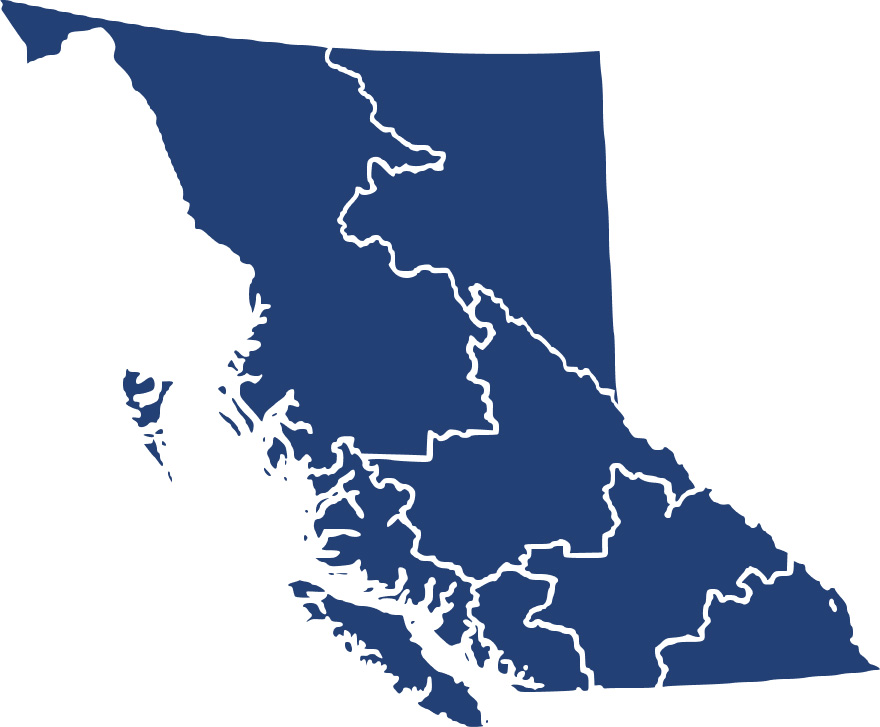Career Overview
Oil and gas well drilling workers are intermediate members of the rig crews that operate drilling and service rig machinery.
People in this occupation:
- Drive trucks and operate specialized hydraulic pumping systems to place cement in wells or to treat wells with chemicals, sand mixtures or gases to stimulate production
- Work for drilling and service rig contractors or petroleum producing companies
- Should have manual dexterity, physical strength and coordination
- Should have an interest in equipment and machinery, and in working outdoors
- Need good communication and teamwork skills, analytical skills and an ability to carry out instructions
Duties
Oil and gas well drilling workers and service operators perform particular duties related to their specific occupation.
Oil and gas well drilling workers:
- Use specialized equipment, information and maps to determine and document the location of buried pipelines and other utilities in preparation for seismic exploration and drilling activities
- Align and manipulate sections of pipe or drill stem from platform on rig derrick during removal and replacement of strings of pipe, or drill stem and drill bit
- Operate and maintain drilling mud systems and pumps during drilling, and mix mud, chemicals and additives
- Record mud flows and volumes and take samples
- Operate and maintain drilling rig diesel motors, transmissions and other mechanical equipment
- Assist in setting up, taking down and transporting drilling and service rigs
- Supervise floorhands and labourers
Oil and gas well service operators:
- Drive well services truck to well site
- Assemble pumping equipment and attach pumps and hoses to wellhead
- Operate hydraulic pumping systems to pump chemicals, gases, sand, cement or other material into well
- Read gauges to monitor pressure, density, rate and concentration and adjust pumping procedure as required
- May mix chemicals and cements
Earnings
Earnings is income that workers receive in exchange for their labour. Depending on the type of employment, earnings can be in the form of wages (hourly), salaries (fixed monthly or annual) or self-employed earnings.
Work Environment
# Workers Employed
340% Employed Full Time
46%Working conditions vary depending on rig locations and weather conditions. Workers labour outdoors, at times in extreme weather conditions, and are exposed to dust, noise and fumes which are common around rigs. As job sites are often located in remote areas, workers may have to travel and stay on or near the site for periods of time.
The work is physically demanding and may involve lifting items that weigh more than 25 kilograms. The work environment also involves working near or with heavy tools and moving machinery, and workers may also be exposed to chemical substances, such as paint, motor oil and drilling mixtures. As a result, standard safety practices, safety gear (e.g., hard hats, eye protection, gloves and steel-toed boots) and emergency procedures are strictly regulated and followed.
Most employees work full time, although they generally do not work year round due to the seasonal nature of the work and the impact of weather conditions. Very few workers are self-employed or work on a part-time basis. Shifts are usually 8–12 hours and rotating shift work is very common. The length of shifts will vary by occupation, location and urgency of the job at hand. Overtime and weekend work may also be required.
Career Pathways
Oil and gas well drilling workers and service workers may progress to senior positions on the rig crew. From there, they may move into rig management or other management positions in the drilling and service rig industries. Workers may also move into drilling-related equipment sales or rig training, regulatory or safety positions.
Direct rig experience is highly valued for advancement, however, additional education and training will also be required.
Related Careers
Occupational Interests
It’s important to understand what kinds of occupations align with your interests.
For more about occupational interests visit Skills for the Future Workforce > Characteristics.
Here are the top occupational interest(s) for this career profile:
Job Titles
Education, Training and Skills
Employers generally require workers in this group to be at least 18 years of age and have completed some secondary school education. Some formal training may also be required. This training is often supplemented with on-the-job training and additional coursework. Training and other requirements may include:
- Petroleum industry safety courses such as first aid and hydrogen sulphide awareness
- Fall protection for rig work, working in confined spaces, workplace hazardous materials information systems, blowout prevention, transportation of dangerous goods and/or additional driver training
Drilling rig workers employed as motorhands or derrickhands must participate in the Rig Technician apprenticeship as an industry standard. For more information please see SkilledTradesBC's website at https://skilledtradesbc.ca.
A minimum of one year of experience as a labourer is also required to work in these occupations.
Education programs in B.C.

Skills
Every job calls for a certain set of skills. Knowing those skills is the first step in finding a good career fit.
Here, you will find the 10 most relevant workplace skills. Some are more important to achieving success in a certain career than others. These skills may come naturally to you or you may need to gain them through education, training and experience.
See the list of work-related skills below, ranked in order of importance for this career. Check out the list and see if this career matches your skills—take that first step!
Watching gauges, dials or other indicators to make sure that a machine is working properly.
Controlling operations of equipment or systems.
Using logic and reasoning to identify the strengths and weaknesses of alternative solutions, conclusions or approaches to problems.
Keeping track of and assessing your performance, other individuals, or organizations to make improvements or take corrective action.
Determining causes of operating errors and deciding what to do about it.
Giving full attention to what other people are saying, taking time to understand the points being made, asking questions as appropriate, and not interrupting at inappropriate times.
Repairing machines or systems using the needed tools.
Considering the relative costs and benefits of potential actions to choose the most appropriate one.
Talking to others to share information effectively.
Being able to solve novel, ill-defined problems in complex, real-world settings.
Labour Market Statistics
Discover data, facts and information that have been gathered and analyzed. Learn about the characteristics of the economy and labour market in B.C.
Employment
Find out about employment types and trends by region and industry.
Employment
340Employment by Region















| Region | Employment | % Employment of this Occupation |
|---|---|---|
| Cariboo | 15 | 4.4% |
| Kootenay | 20 | 5.9% |
| Mainland/Southwest | 70 | 20.6% |
| North Coast and Nechako | 0 | 0.0% |
| Northeast | 165 | 48.5% |
| Thompson-Okanagan | 55 | 16.2% |
| Vancouver Island/Coast | 25 | 7.4% |
Labour Market Outlook
The B.C. Labour Market Outlook is a 10-year forecast of the expected supply and demand for labour in the province. It’s usually updated every year. The purpose is to provide British Columbians with the knowledge to make informed decisions on careers, skills training, education and hiring.
Forecasted Job Openings (2023-2033)
80Forecasted Job Openings
Forecasted Employment Growth Rate
Composition of Job Openings
Job Openings by Region (2023-2033)















| Region | Job Openings | Avg. Annual Employment Growth |
|---|---|---|
| Cariboo | 0 | 0.6% |
| Kootenay | Not available | Not available |
| Mainland/Southwest | 10 | 0.4% |
| North Coast and Nechako | Not available | Not available |
| Northeast | 30 | 0.5% |
| Thompson-Okanagan | 30 | 1.4% |
| Vancouver Island/Coast | 10 | 2.1% |
Industry Highlights
Learn about the opportunities in B.C.'s major industries, including employment trends, earning potential, locations of work and more.
Forecasted Job Openings by Industry
| Industry | Job Openings (2023-2033) |
|---|---|
| Mining And Oil And Gas Extraction | 70 |
| Transportation And Warehousing | 10 |
| Professional, Scientific And Technical Services | 0 |
| Utilities | 0 |
| Construction | 0 |
Insights from Industry
Many of the opportunities that will become available in the next several years will be due to new job growth, however, since this is a small occupational group, openings from job creation and retirements will be relatively few.
Resources
-
B.C. Ministry of Energy, Mines and Petroleum Resourceswww2.gov.bc.ca/gov/content/governments/organizational-structure/ministries-organizations/ministries/energy-mines-and-petroleum-resources
-
Canadian Association of Oilwell Drilling Contractors (CAODC)caodc.ca
-
Canadian Institute of Mining, Metallurgy and Petroleum (CIM)www.cim.org
-
Careers in Oil + Gaswww.careersinoilandgas.com
-
Petroleum Services Association of Canada (PSAC)www.psac.ca
-
SkilledTradesBCskilledtradesbc.ca/







